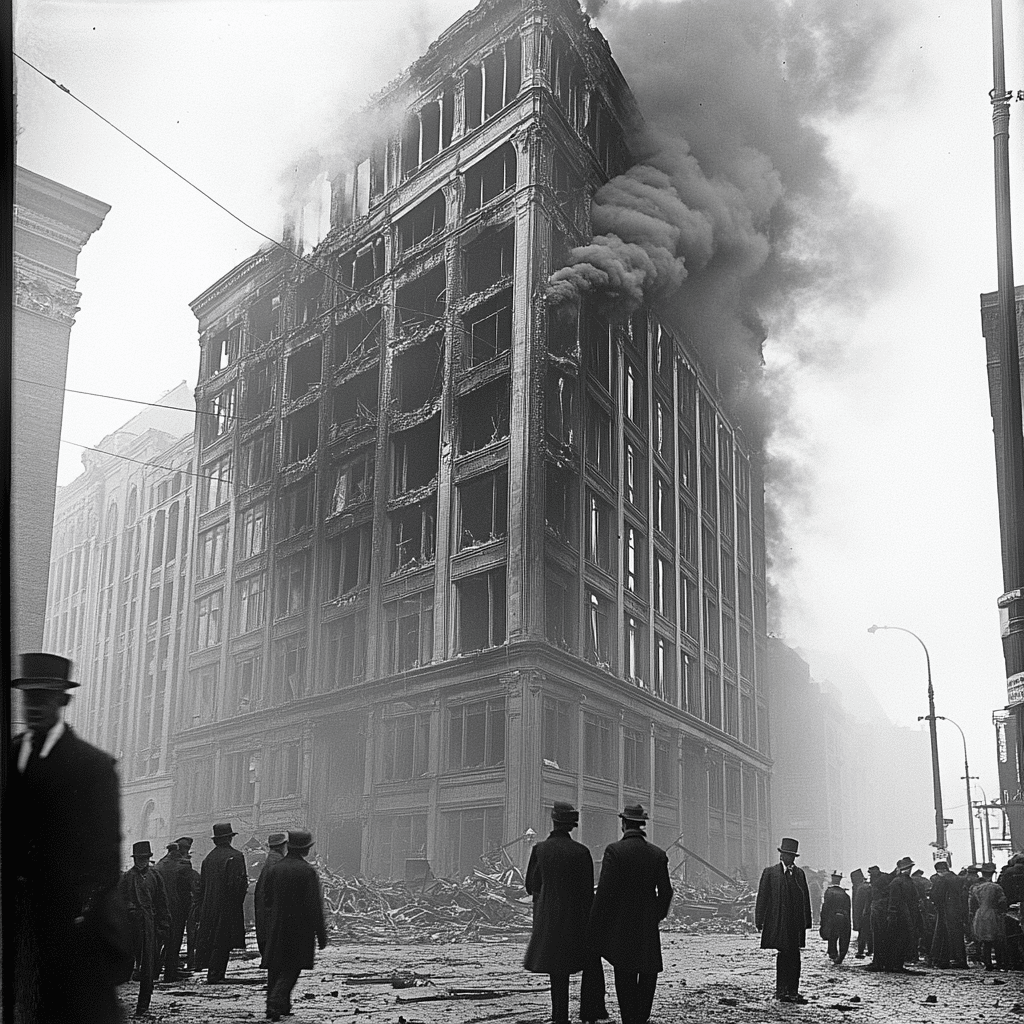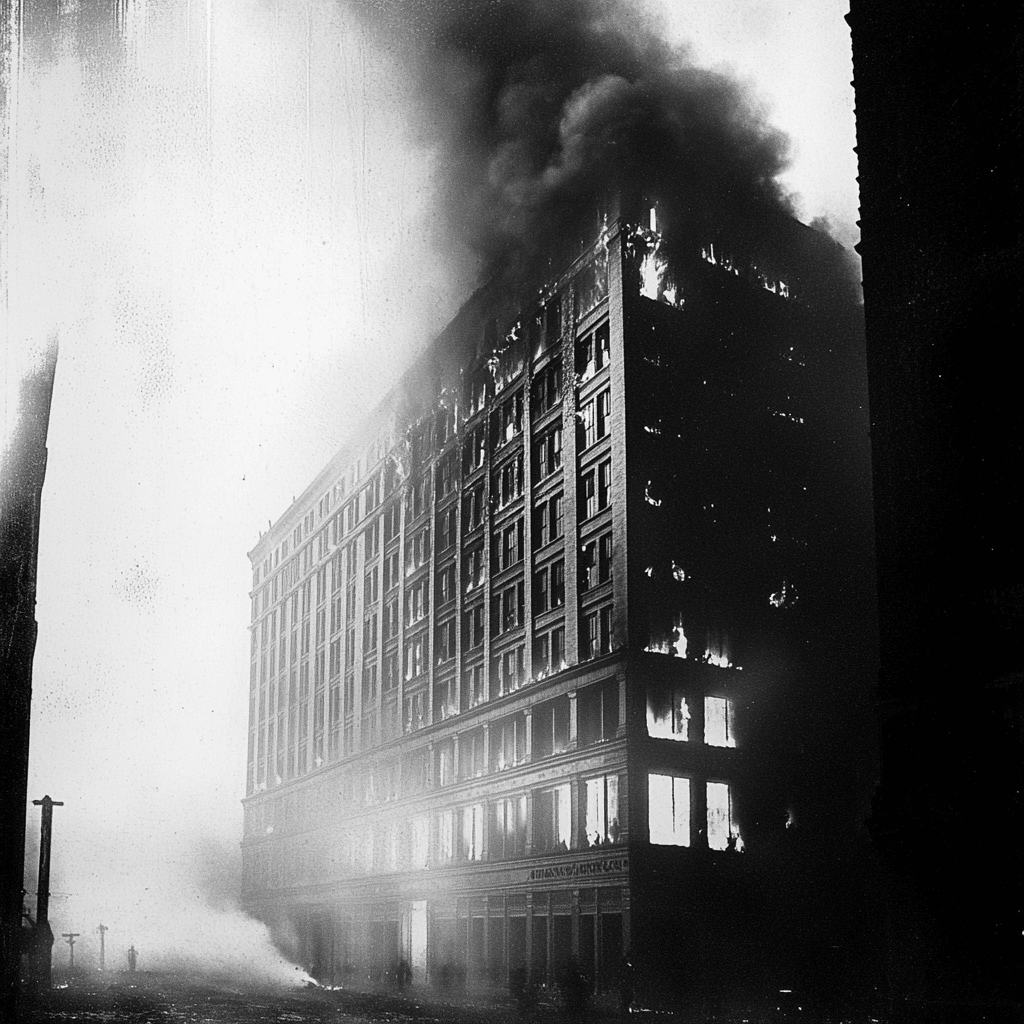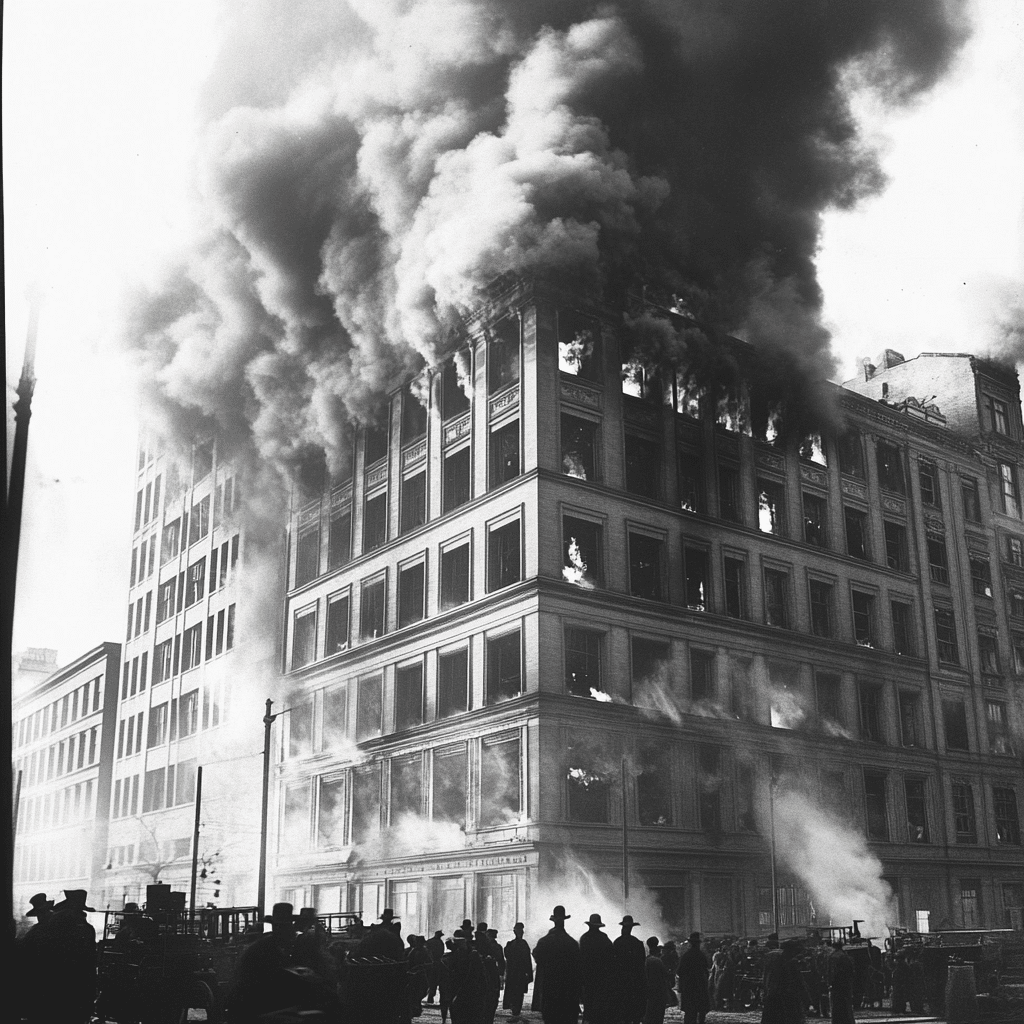The Triangle Shirtwaist Factory fire, which happened on March 25, 1911, is etched into the annals of American history as one of the deadliest industrial disasters. This tragic event took 146 lives, mostly young immigrant women, and sparked a nationwide movement advocating for improved labor conditions and stricter workplace safety regulations. To understand how the Triangle Shirtwaist Factory fire reshaped labor laws and conditions in the U.S., let’s explore seven critical aspects that emerged from this tragedy and revealed the harsh realities of industrial America.
7 Key Learnings from the Triangle Shirtwaist Factory Fire

1. Workplace Safety Regulations
The Triangle Shirtwaist Factory fire underscored the reckless safety standards that permeated factories at the time. In the aftermath, various reform initiatives sprouted like wildflowers, including stringent fire safety regulations that remain relevant today. The New York State Legislature’s Factory Investigating Commission initiated over 30 new laws aimed at enhancing workplace safety. These reforms have since laid the foundation for a safer working environment across numerous industries.
2. Unionization and Workers’ Rights
The catastrophic fire became a rallying point for labor movements eager to secure workers’ rights. Organizations like the International Ladies’ Garment Workers’ Union (ILGWU) emerged, advocating for fair wages and safer working conditions. This tragedy helped reshape labor rights, leading to increased interest in unionization among workers nationwide. With the courage of individuals inspired by the fire, the labor movement in America began to gain momentum, challenging the status quo.
3. Public Awareness and Media Influence
The media’s coverage of the Triangle Shirtwaist Factory fire played a crucial role in raising public awareness about the horrors of industrial working conditions. Newspapers throughout the nation depicted harrowing accounts of workers trapped inside the building, pleading for assistance. The vivid imagery and personal stories resonated with readers, stirring outrage and leading to heightened demands for labor reform. This event highlighted the media’s potential to influence public opinion and push for societal change.
4. Impact on Immigrant Workers
A significant number of the victims were young immigrant women, primarily of Jewish and Italian descent. The Triangle Shirtwaist Factory fire laid bare the vulnerabilities faced by immigrant laborers in New York City. As the aftermath unfolded, social movements emerged to address the exploitation and insecure working conditions that immigrants regularly suffered. This spotlight on immigrant workers led to support networks and advocacy groups working towards better treatment and opportunities.
5. Philanthropy and Social Reform
In the wake of the disaster, notable figures such as Frances Perkins, who later became the first female cabinet member in U.S. history, engaged in philanthropy and social reform initiatives. These efforts aimed at uplifting the working class and improving their living standards through community-based projects. Many wealthy individuals contributed to social causes, fostering a spirit of collective responsibility and resilience following such a tragic loss of life and possibility.
6. Long-term Changes in Labor Laws
The long-lasting ramifications of the Triangle Shirtwaist Factory fire significantly altered labor legislation not just in New York, but across the United States. The newly established laws paved the way for vital labor protections, laying the groundwork for future legislation such as the Fair Labor Standards Act of 1938. Over the years, the fire’s legacy became a beacon guiding labor rights activists in their ongoing struggle for equity and safety in the workplace.
7. Memorialization and Remembrance
Today, the memory of the Triangle Shirtwaist Factory fire is honored through annual remembrances and memorials. These events serve not only to commemorate the lives lost but also to keep the conversation surrounding workers’ rights alive. Educational initiatives continue to emphasize workplace safety and the significance of understanding labor rights. In communities across America, remembering this disaster inspires collective action toward continued reform.

The Triangle Shirtwaist Factory Fire and Its Relevance Today: A Call to Action
The lessons from the Triangle Shirtwaist Factory fire are far from obsolete; they echo in today’s labor landscape. Discussions around employee treatment and safety persist, as seen in incidents like the Michigan grocery store sign woman that gained traction on Reddit. Such accounts raise critical questions about the welfare of workers in various sectors. The ongoing closure of retail giants like Dollar Tree and Family Dollar further underscores the precarious nature of labor in America today.
The Triangle Shirtwaist Factory fire acts as a stark reminder of the consequences of neglecting worker safety and rights in an industrialized society. Current headlines reiterate the challenges laborers face and underscore the importance of continually fighting for their rights. Just as the fire mobilized individuals to demand change over a century ago, today’s consumers must rise and advocate for fair labor practices in the face of modern challenges.
As we reflect on the historical impact of the Triangle Shirtwaist Factory fire, let’s remember the responsibilities we carry today. By standing together as advocates for reform, we can ensure that tragedies like this never happen again. Every voice counts, whether it’s rallying support for a Costco employee fighting for fair treatment or promoting work safety standards in light of tragic incidents. The fight for workers’ rights remains an ongoing journey for justice and dignity.
Triangle Shirtwaist Factory Fire: Fun Trivia and Interesting Facts
Tragedy and Transformation
The Triangle Shirtwaist Factory fire, one of the most devastating events in American industrial history, claimed 146 lives in March 1911 and illuminated the stark realities of workers’ conditions. This tragic incident not only led to stricter safety regulations but also gave birth to a significant labor movement, shaping workplace safety as we know it today. Interestingly, this event resonates in popular culture; you can find references to the struggles of workers reflected in various media, such as the classic film Wall Street, which highlights the gritty side of business. Just like Gale hawthorne from The Hunger Games, who symbolized resilience in the face of adversity, the victims of this fire became symbols of the need for change.
Lessons Learned
In the wake of the fire, endless reforms sparked, leading to better working environments across the country. For instance, regulations about exit doors and fire drills dramatically improved. Interestingly, weather can play a role in industrial safety too; much like how Santa Cruz, CA weather influences outdoor activities, the conditions within factories impact workers’ health and safety. The Triangle Shirtwaist Factory fire firmly highlighted these issues, urging society to take a hard look at existing practices.
Legacy of Change
The aftermath of the Triangle Shirtwaist Factory fire pushed the nation forward, influencing not only labor laws but also igniting conversations about workers’ rights everywhere. The legacy of those lost continues to influence activists and artists alike, as seen in songs that resonate with themes of struggle and hope—just like the powerful Our Song Lyrics reflect emotions tied to personal victories. Additionally, modern conversations around labor rights often reference historical events, drawing connections to current figures, such as college basketball star Johnny Juzang, who embodies the spirit of striving for more. Just as Fionnula Flanagan has portrayed characters overcoming obstacles, the stories emerging from the fire remind us why diligence in reform matters.




